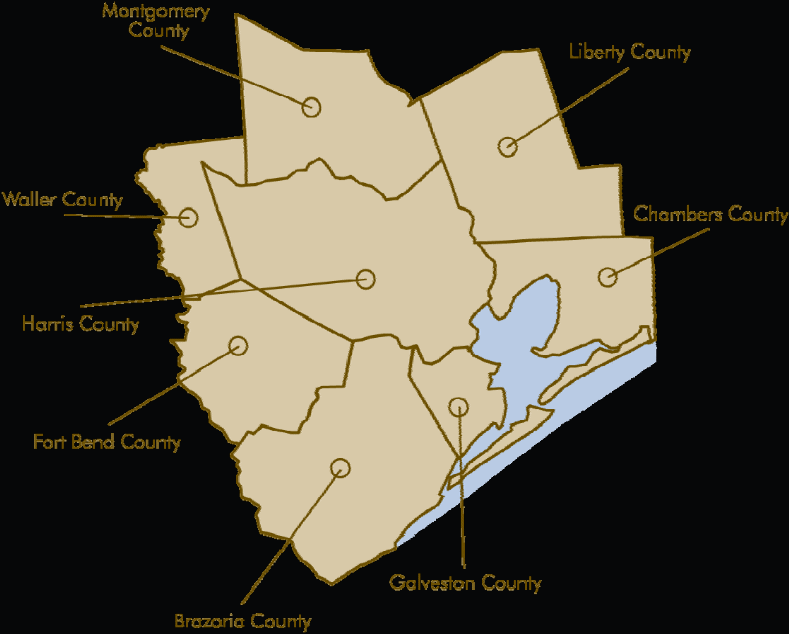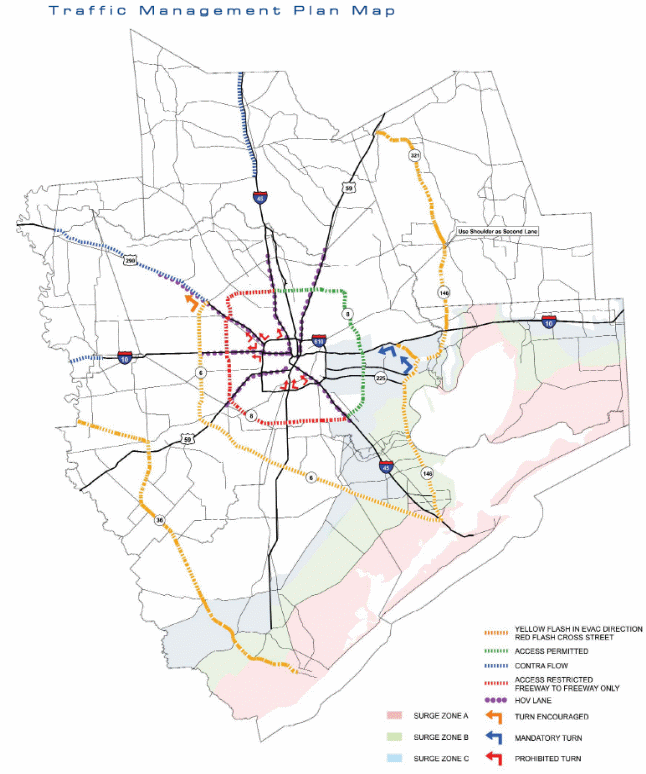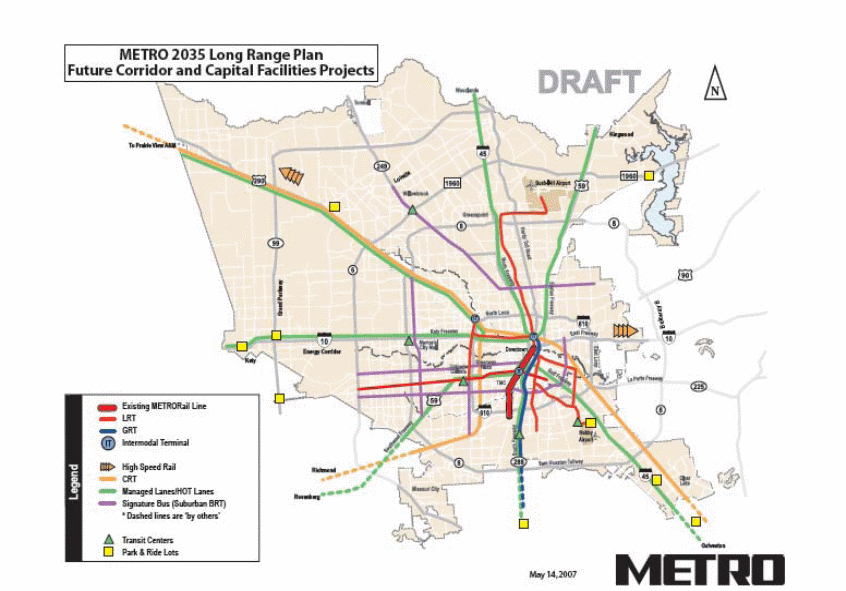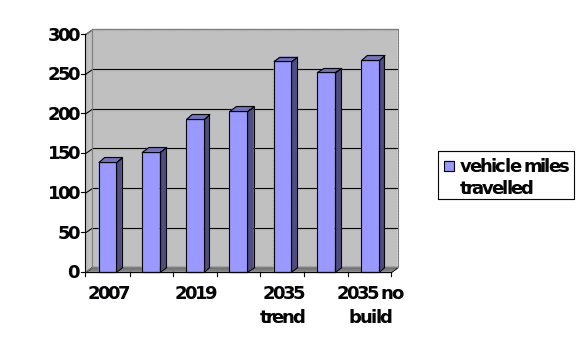Introduction
The Houston-Galveston area has been identified to be a dynamic economic center with an estimated growth in the population of 60 percent. Houston which is found in Texas is the fourth largest city in the United States. The city has continued to undergo diverse growth and expansion activities in its housing, business, and commercial industries. Despite the rapid developments taking place in Houston, the city continues to experience problems in its transportation sector.
The city is constantly plagued by traffic congestion and inadequate public transport for its many residents. This has made it difficult to access various parts of the city due to the congestion and lack of transport. There has been an estimated increase in the population in the Houston-Galveston area with future projections predicting that three million new residents are expected in the area by the year 2035.
This growth in the population will also see the creation of 1.5 million jobs within the city that will in turn create a demand for 1.7 million homes in the area. Such rapid growth in the population will lead to a heavy drain on the current road networks and systems (Crossley par.1).
However, a new transportation plan has been developed by the Houston- Galveston Council to deal with the current and future transportation problems in the area. This plan is referred to as the H-GAC 2035 Regional Transportation Plan. This long-range plan will serve as a blueprint for transportation planning in the area for the next thirty years. The new transportation plan is meant to address the greater regional growth of the Houston-Galveston area as well as any transportation problems that might arise in the regions (H-GAC par.1).
The plan is meant to address the transportation needs of eight counties that fall under the eight-county Transportation Management Area (TMA) which are Liberty County, Chambers County, Montgomery County, Waller, Harris, Fort Bend, Galveston, and Brazoria counties (Murray 35). These counties were projected to experience an increase in their populations over the next 20 years. These counties are identified in the map below

Existing Transport Conditions in the Houston-Galveston Area
Traffic congestion in any major city has been one of the fundamental problems that affect traffic movement in large cities. Before any transportation plan was devised to deal with transport problems, the traffic congestion in the Houston-Galveston area had been termed to be very serious. Traffic and transport problems made it difficult for most residents in the Houston-Galveston area to get to their places of work in the city. The traffic peak times in the area occurred between 6.30 am to 9.30 am and 3.30 to 6.30 pm daily. Other traffic problems were the underdeveloped arterial street systems that were meant to reduce traffic congestion on the roads. The expansion of the freeway system was meant to ease traffic congestion by creating various arterial street systems but the freeway system developed some problems (Cox 2).
One of these problems was the number of lane interchanges that still conformed to the old freeway design. This flaw in the design assumed that a less through capacity would be needed to manage traffic that was going off the side of the freeway. However, the lane-changing that occurs at interchanges required more through capacity instead of less. Another problem with the freeway system was there were only one lane reversible facilities in the freeway systems. This meant that mobility was improved towards the downtown parts of Houston city during the morning and away from the downtown area during the evening peak hours (Cox 2). Apart from problems in the freeway system, the bus service in the city was a major problem before it underwent renovations.
The bus service in Houston was ineffective and inefficient with most buses getting late most of the time due to breakdowns or time schedule conflicts. The residents who relied on the bus services found it difficult to determine when the buses would be on time or whether they would be in operation at all. The poor bus services forced the residents to request improvements in the bus sector. In 1978, the voters approved for an increase in tax so that the bus transportation sector in the city could be improved. This vote saw $790 million of their taxes being used for the purchase of 20 parks and ride lots as well as 800 new buses and 750 bus shelters.
These acquisitions saw the bus system facing a complete overhaul making it more reliable and effective. The bus system has over the years continued to experience more changes that have seen the increase of bus express lanes on the highways and expressways. The system has experienced a lot of positive growth that the American Public Transport Association has ranked the bus system in the city the safest in the whole of America (U.S. News 49).
In dealing with the traffic congestion problems that had affected the Houston-Galveston area, the Houston-Galveston area council developed the H-GAC 2035 regional transportation plan that would be used to ease traffic congestion in the area. The plan addresses the greater regional growth of the Houston-Galveston area as well as deal with the mobility needs of the residents of the city. Proponents of the plan had projected that the demand for vehicle travel within the city would double during the plan’s time horizon.
The goals of the regional transportation plan were to improve mobility in the Houston Galveston area as well as reduce traffic congestion in the region, improve the accessibility of Houston residents to their homes, jobs, and other areas within the region, increase the transit options to the residents of the Houston-Galveston area, coordinate the transportation networks in the area as well as the land use plans, and create a healthier environment for the Houston-Galveston residents (Regional Transportation Plan 5).
The progress that has been made since the adoption of the 2035 regional transportation plan in the Houston-Galveston area includes the construction of the East end and Southeast light rail lines, the initiation of the Bellaire and Bissonnette bus service in the city, the introduction of three new routes in the Baytown and Pasadena areas of Houston, the introduction of four new routes in Lake Jackson, Angleton, Clute and Freeport, the introduction of a new park and ride service to Galveston Island and the Texas Medical Center and the construction of new Sterling Ridge park and ride service to Houston’s central business district. Other improvements include the completion of five new bike trails that will improve the existing bikeway network in Houston, the completion of the Katy Freeway and the Galveston Causeway (H-GAC 3).
Recommended Improvements
The 2035 regional transportation plan provides various solutions to the traffic and transport problems that affect the Houston-Galveston area. The recommended improvements to the transportation system are meant to improve the region’s mobility as well as improve the quality of life of all residents by providing more travel options. The plan suggests that improvements have to be made on the region’s transport network by improving the road system capacity, the transit system, and the transport system for non-motorized.
Since traffic congestion in the area cannot be avoided, the only viable solution is to increase the system capacity of most road networks in the region to improve mobility. The table below demonstrates the recommended system capacity improvements that are proposed in the plan (Regional Transportation Plan 12).
Even if the above recommendations were to be implemented within the 2035 transportation plan, the congestion levels within the Houston-Galveston area would continue to increase. However, if the plan was not implemented, congestion would double at the current level and reach unmanageable levels by 2035. To reduce these congestion levels to a more manageable level, the plan proposes a regional roadway system that will improve the system capacity of most roads in the Houston-Galveston area. The regional transportation plan proposed the establishment of the 2035 regional roadway system whose key elements will include an upgrade of the SH 249 to a freeway status between the BW 8 section and the Grand Parkway region, the increased managed use of US 59, US 290, SH 288 and IH 45 lanes and freeway segments that are inside IH 610 (Regional Transportation Plan 14). The diagram below represents the 2035 regional roadway system.

The recommended improvements for the transit system in the Houston-Galveston involve incorporating the 2025 Metro solutions plan that was developed to deal with the future mobility needs that had been identified in the regional planning efforts by the H-GAC council. The transit in the area has been forecasted to increase from the current 485,000 daily transit boardings to 725,000 passenger boardings by the year 2035. The recommended improvements will involve expanding the bus and rail transit services, introducing new transit modes such as commuter rail transit and signature express bus services, the transit connectivity to various central hubs, and the coordination of transit services within the Houston-Galveston area (RTP 15).
The cosmic Metro plan of 2035 requires a major improvement of the existing transport plan by incorporating different and firm facilities on the significant travel corridors of the city. The vital improvements that are planned to be established by the year 2035 consist of modern terminals, various pathways, a recreation park, and car facilities. The diagram below represents the METRO 2035 solutions transit plan included in the regional transportation plan.

The recommended improvements for the nonmotorized transportation system in the area include improving the existing pedestrian-bicyclist travel network. The regional transportation plan developed for the year 2025 enabled the Houston-Galveston council to identify the districts that have significant opportunities for replacing vehicle trips with pedestrian or bicycle trips. The council has developed comprehensive pedestrian and bicyclist plans that will be used in five districts within the Houston-Galveston area.
The existing bikeway in these regions is 617.34 miles which covers all the eight-county regions. The 2035 regional transportation plan proposes a 57 percent increase on this bikeway. The total amount of money that will be needed to improve the bikeway amounts to 274 million dollars. The regional transportation plan also provides the guidelines that will be used in considering the bicyclist and pedestrian’s needs during the development of the projects (Regional Transportation Plan 18).
Implementation of the Plan
The implementation of the 2035 regional transportation plan will see a reduction in the traffic congestion that exists in the Houston-Galveston area. Some of the potential benefits of implementing the plan include a reduction of $3 million in travel costs per year. This amount is measured by the amount of fuel and time that has been saved if the 2035 regional transportation plan is implemented. Other benefits of the implemented 2035 plan will be the increase in the use of the transit options and a healthier environment for Houston-Galveston residents as a result of the reduced on-road gas emissions.
Residents will have more travel options as a result of the expansion activities that have been proposed on the regional road system as well as the regional bikeway and pedestrian walks. The council and local government will save $400 million that accrues from road accidents and car crashes (Regional Transportation Plan 9). The results of the implementation plan are measured by the vehicle miles traveled from the start of implementing the plan to the end of the project implementation as represented by the diagram below.

Other benefits that will accrue from implementing the 2035 regional transportation plan for the Houston-Galveston area will be the peak period pricing. The benefits of peak period pricing will include offering incentives for effectively using the existing transit capacity, the enhancement of future mobility, locally generated revenue that will be used in expanding the transportation system in the area, and a reduction in the amount of money spent in transport delays and low vehicle speeds (Regional Transportation Plan 21).
The implementation of the 2035 regional transportation plan will involve developing travel demand management plans that will be used to improve mobility in the Houston-Galveston area. The Houston-Galveston council has proposed three travel demand programs that will be used to implement the plan which are the commute solutions program, the clean air act and clean cities programs.
The strategies that will be used in implementing the goals of the regional transportation plan include the coordination of transit and road plans to connect the existing networks with the proposed transportation network, coordinate transportation improvements within the Houston-Galveston area, encourage the development of convenient and sake bike or pedestrian walks, promote pedestrian and bicycle connections between regional facilities and neighborhoods, promote transit-oriented development investments, promote high-density project initiatives meant to improve transit corridors and promote community designs that will provide convenient access to transit systems (Regional Transportation Plan 33).
The total expenditure of the 2035 regional plan will amount to $156.5 billion dollars. 72 percent of this amount will be allocated to roadway projects that will support higher vehicle capacities while 27 percent of the amount will be used in improving the transit services of the Houston-Galveston area. The remaining amount will be used to improve the bike and pedestrian network system within the region. The plan will improve the region’s accessibility and quality of life while at the same time ensuring that Houston-Galveston’s economy continues to grow.
Conclusion
The transportation plan will ensure that the transportation problems experienced in the Houston-Galveston area are improved from the current state to a less decongested state. The plan will also ensure that the amount of time and money spent in onaffic snasnarl-upsd congestion areisduced considerably.
References
Cox, Wendell. Houston: “can do” urban area, n.d. Web.
Crossley, Jay B., Regional transportation plan, 2008. Web.
Houston-Galveston Area Council (H-GAC). The 2035 regional transportation plan update. 2009. Web.
Houston-Galveston Area Council (H-GAC). 2035 Houston-Galveston regional transportation plan, 2008. Web.
Murray, Gail. Strategies to assist local transportation agencies in becoming mobility managers, Washington: Transportation Research Board, 2007.
Regional Transportation Plan (RTP). The 2035 Houston-Galveston regional transportation plan, 2007. Web.
U.S. News. News and world report, United States News Publication Corporation, Vol.142, No 16-23, 2007.